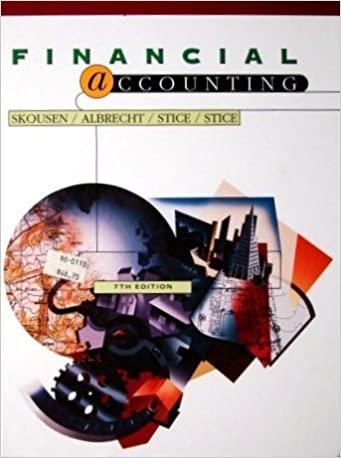Answered step by step
Verified Expert Solution
Question
1 Approved Answer
11. Boom Corporation had operating income of $235,000 and a 40% tax rate. The firm had short-term debt of $115,000, long-term debt of $321,000, and
11. Boom Corporation had operating income of $235,000 and a 40% tax rate. The firm had short-term debt of $115,000, long-term debt of $321,000, and common equity of $436,000. What was its return on invested capital (ROIC)? *
5 points
10.78%
16.17%
18.63%
26.95%
None of the above
12. Last year, Banda Corporation had $250,000 of assets (which equaled its total invested capital), $18,750 of net income, and a debt-to-total-capital ratio of 37%. Now, suppose that the new CFO convinced the president to increase the debt-to-total-capital ratio to 48%. Sales, total assets, and total invested capital would not be affected, but interest expenses would increase. However, the CFO believed that better cost controls would be sufficient to offset the higher interest expense and thus keep net income unchanged. By how much would the return on common equity (ROE) improve as a result of the change in the capital structure? Do not round your intermediate calculations. *
5 points
2.52%
11.00%
11.90%
14.42%
None of the above
13. Last year, Yukon Company reported $10,500,000 of sales, $6,250,000 of operating costs (excluding depreciation), and $1,300,000 of depreciation. The company had $5,000,000 of bonds that carried a 6.5% interest rate, and its federal-plus-state income tax rate was 35%. This year's data were expected to remain unchanged except for one item, depreciation, which was expected to increase by $630,000. The company uses the same depreciation calculations for tax and stockholder reporting purposes. By how much would the net income change as a result of the change in depreciation? *
5 points
The net income would decrease by $409,500
The net income would decrease by $220,500
The net income would decrease by $630,000
The net income would decrease by $1,296,750
None of the above
14. Honan Company sells on terms that allow customers 45 days to pay for merchandise. Its sales last year were $950,000, and its year-end receivables were $170,000. If the result of the days sales outstanding (DSO) is less than the 45-day credit period, then customers are paying on time. Otherwise, they are paying late. By how many days early or late were customers paying? Use a 365-day year in your calculations and assume that all sales were done on credit. Do not round your intermediate calculations. *
5 points
17.89 days early
20.32 days early
20.32 days late
65.32 days late
None of the above
15. A firm had a current ratio of 2, long-term debt of $31,000, total liabilities of $48,500, sales of $218,400, net profit margin of 25%, interest expense of $9,000, a tax rate of 40%, a fixed assets turnover ratio of 1.456. What was the firm's basic earning power (BEP) ratio? *
5 points
0.18
0.29
0.54
1.257
None of the above
Step by Step Solution
There are 3 Steps involved in it
Step: 1

Get Instant Access to Expert-Tailored Solutions
See step-by-step solutions with expert insights and AI powered tools for academic success
Step: 2

Step: 3

Ace Your Homework with AI
Get the answers you need in no time with our AI-driven, step-by-step assistance
Get Started


